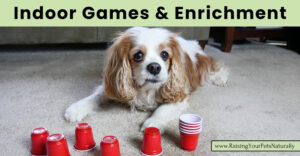Google Adsense—>

Why is My Dog Scared?
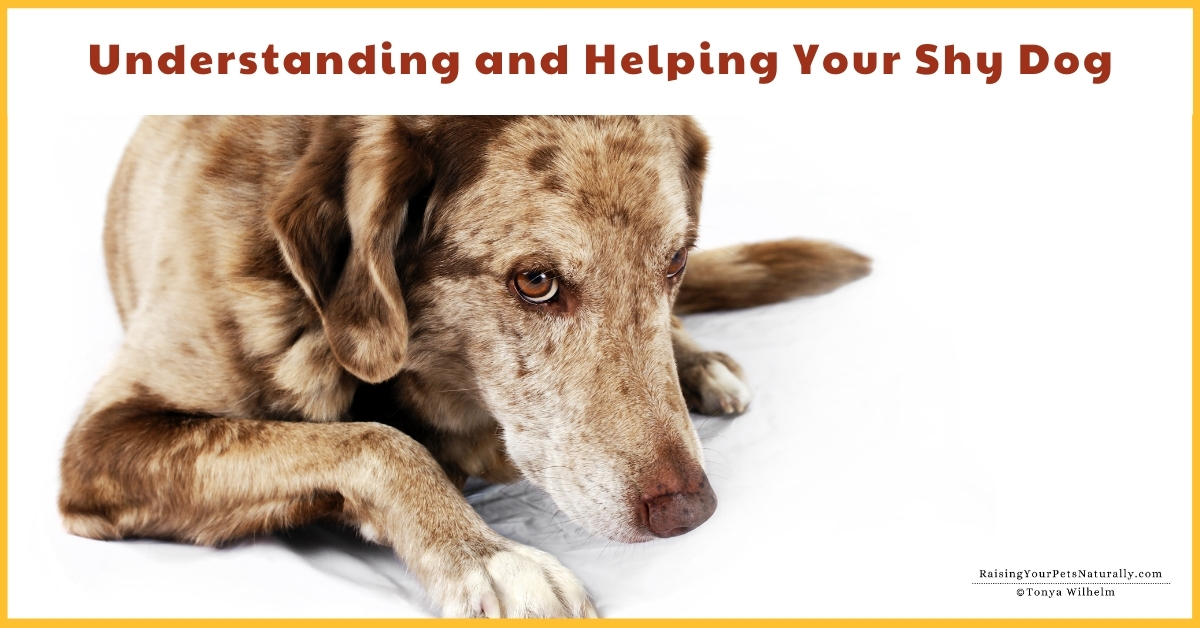
Shy dogs have always held a special place in my heart. My dog training career started in an animal shelter, so needless to say, my heart broke every time I went to work. Since the beginning, I have made it my life’s work to help as many fearful dogs and their guardians as I possibly can. Today’s post is one of those days.
Why are Some Dogs Shy and Other Dogs Fearless?
Both nature and nurture develop a dog’s personality, they play together like Yin and Yang. Puppies can be born with a personality type that is prone towards fearfulness. Two puppies can be raised in the same fashion and one may be more fearful, reserved or hesitant. It’s no different than two children being raised the same way, but have different personalities.
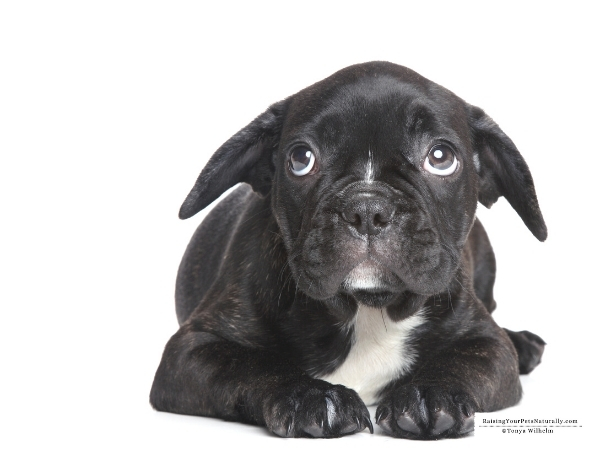
Although puppies can be predisposed towards being shy, a fearful dog is often a product of his experiences or lack of experiences. You probably have heard many dog trainers recommend a good puppy socialization class, and the reason is simple, puppies need frequent and positive associations with people, places, and things. A lack of good experiences can quickly turn into a fear of situations or the unknown. If a puppy has a lot of good experiences in a variety of situations, he is more likely to develop a confident personality and has a good bounce back when facing something new or potentially scary.
Something Scary Happened
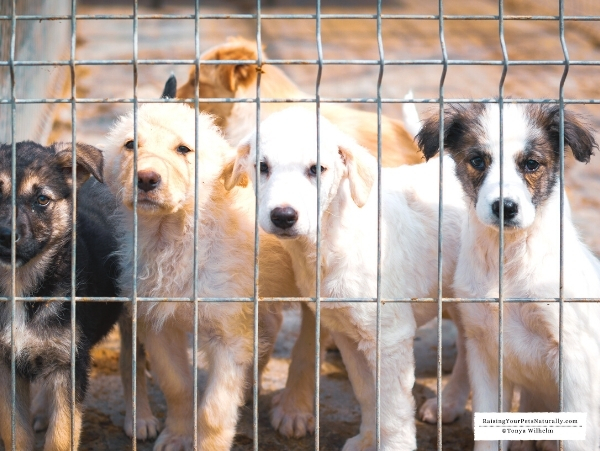
If a puppy has a good socialization history, he will likely be able to cope with something scary. But, sometimes, that scary is just too much to deal with. Think back to the shelter environment. If an otherwise, confident, 1-year-old dog was surrendered to a shelter and stayed in the shelter for a week or more, that experience can certainly make that dog a shy or fearful dog. Or, that one thunderstorm that shook the house while you were away at work, can turn a well-adjusted dog into a thunder-phobic dog with separation anxiety that eventually will develop other sound sensitivities.
How Can I Tell if My Dog Is Nervous?
As a good dog parent, we need to be able to understand what our dogs are trying to communicate with us. They do talk, we just need to learn what they are saying and to actually listen to them. A dog’s body language is the best indicator of how he feels. By understanding the subtleties of dog body language, you will be able to easily determine when your dog is nervous or uncomfortable. I say subtle, because, in order to help a dog feel more confident and secure, he must not get overstressed.
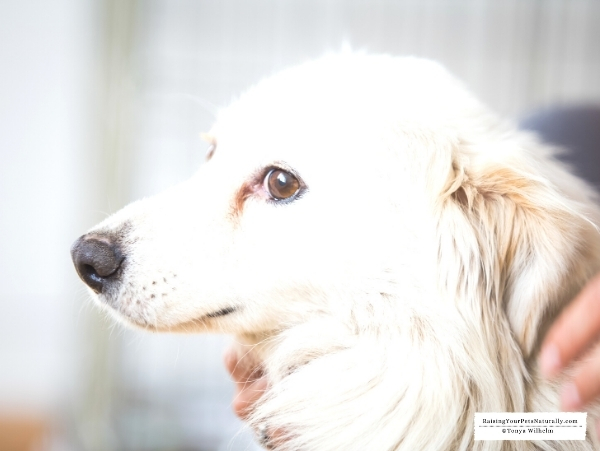
Take time to observe what your dog looks like on a day to day basis. Where does he typically carry his tail? Is it high, middle ground, flat? What about his ears? Having a mental picture of what your dog looks like when he is relaxed is the best place to start when trying to figure out if he is nervous. When dogs are nervous, their body starts to move back and away. Ears back, head turned away, lips pulled back, eyes narrow, leaning back, tail lowered etc. When a dog is becoming over-aroused, things move forward. A comfortable and relaxed dog is typically in his neutral position.
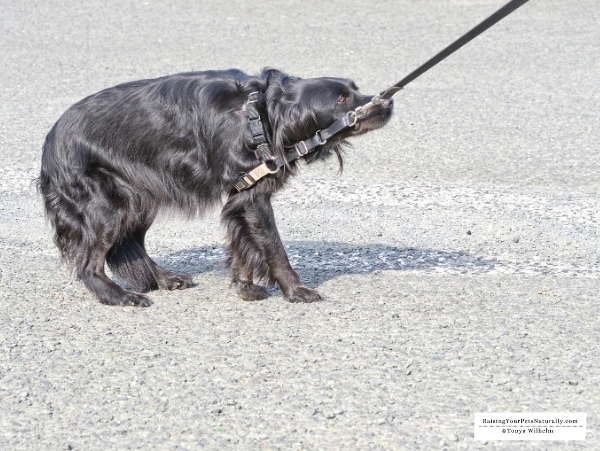
Common Tense, Anxious or Fearful Gestures
- Stiff body or tension in the body.
- Change in body position. Having an open mouth then suddenly closing his mouth.
- Freezes or seems immobile.
- Backing body away or head turns away.
- Heavy panting, leaving wet paw prints on the ground.
- Excess shedding.
- Clacking teeth, shivering or shaking.
- Dilated pupils.
- Drooling or excessive salivating
- Ears plastered back or lower than usual.
- Avoiding eye contact.
- Whining, barking or growling.
- Hyperactive, snappy with treats, toys or nervous energy.
- Unusual sniffing or other avoidance gestures.
What Can I do To Help My Shy Dog?
Behavior Modification Training– A training program to help a shy dog consists of slowly exposing a dog to what he perceives as scary at a level where he doesn’t show stress and pairing that with something good. In other words, if a dog starts to show stress around a man 10′ away, you would want to start at the distance your dog does not show any signs of anxiety and then reward your dog with something valuable, such as cooked meat. Practicing this often and in situations where your dog can be successful and fear-free is how you can slowly change is emotions from being fearful to feeling secure. This process is referred to as counter conditioning and desensitization.
Don’t forget to subscribe for more free videos.
Desensitization is a process in which you would reduce the negative association of a stimulus, the man for this purpose. Desensitization works by gradually exposing the dog to low levels of the stimulus without fear. Counter conditioning is when you pair the stimulus (the man) with a new association (the reward). In other words, the presence of the man equals the reward the dog loves. The key to success is that the stimulus has to be stress-free in order to work and of, course, lots of repetitions and practice.
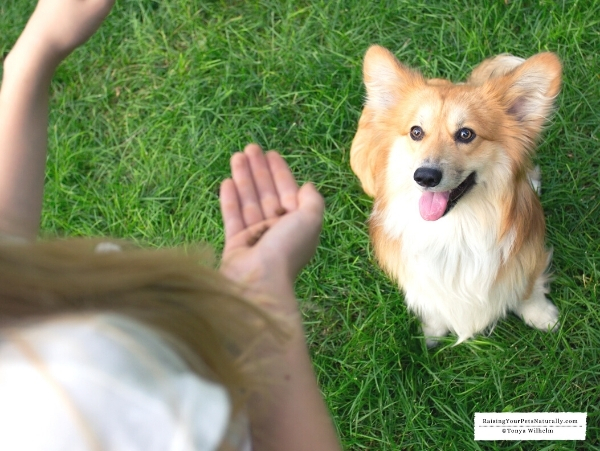
Shen Disturbance– Traditional Chinese Medicine has been around for thousands of years. According to TCM, when a dog has a panicky personality, full of stress and anxiety, he would be considered to have a Shen Disturbance. The Heart Shen allows the dog to be calm and relaxed, something these dogs cannot do. Treatment would include nourishing, or calming the Shen, to aid in their ability to relax and cope.
Natural Remedies– I often refer to these as “add-ons.” In other, words, a good behavior modification program is still necessary for success. Some dogs are so stressed, that they cannot function without a natural remedy. Natural remedies can be added to a training program to help take some of the stress off a dog and provide a window for training. A shy or fearful dog will likely have nervous energy throughout his life, not just during specific situations. It is important to help a dog be relaxed through his daily activities and to find his inner Zen. Finding the right natural remedy for your dog may be a bit of trial and error. I personally tend to use a natural remedy in each category for a fearful dog. If it doesn’t hurt, why not?
Anxiety Wraps– Body wraps or dog anxiety jackets can provide a sense of security for a dog. These wraps or jackets are snug-fitting and help a dog become more aware of his own body and less concerned with the environment or situation he is fearful about.
Essential Oils– Essential oils can certainly benefit a dog with anxieties. However, they are very potent and can be easily overused or used incorrectly. Before jumping on the essential oil bandwagon, I urge you to seek guidance from a professional who is well versed in essential oils and pets. Once you have found a suitable practitioner, some oils to include Citrus aurantium var. amara, Lavandula angustifolia, Melissa Officinalis, Sweet Orange or Ylang Ylang.
Exercise– When a dog acts out and exhibits behavioral problems, increasing his activity is a must. It is much easier to alleviate some of his nervous energy in a more appropriate way. If you provide your dog with plenty of appropriate physical and mental activities, this will aid in his treatment.
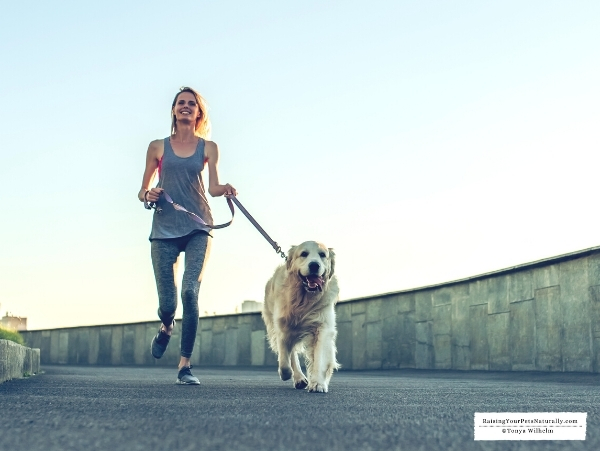
Flower Essences– Flower essences are a natural remedy that typically does not have any adverse side effects and can be easily combined with other treatments. The essences of specific flowers are used to balance the mind and body. Some flower essences to try include Aloe vera, Arnica mollis, Borago officinalis, California poppy, Calochortus leichtlinii, Ceratostigma willmotiana, Comfrey, Dill, Erythronium purpurascens, Gentiana amarella, Helianthemum canadese, Larix decidua, Mimulus guttatus, Peace rose, Penstemon newberryi, Prunus cerasifera, Rock rose or Rosa californica.
High-Quality Appropriate Diet– Since you are a fan of Raising Your Pets Naturally, I’m sure by now you know having a proper diet and nutrients is essential for a dog’s physical, emotional and mental health. For dogs with Shen disturbances, a cooling diet that contains duck, rabbit, or cod can be very helpful. A neutral diet such as beef or pork will also work. Some other foods that help balance your dog’s nervous energy include sardines, sweet potatoes, chicken eggs, seaweed, kelp, apples, and spinach. A tailored diet is an ideal approach to assure your ingredients are from pure, wholesome food.
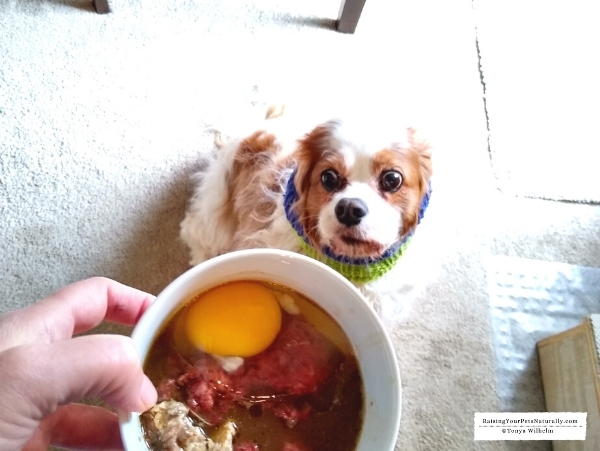
Herbs– There are a variety of herbs that can help a dog relax, build confidence and calm his restless energy. As with any medication, please speak with your holistic veterinarian about any side effects or drug interactions. Some herbs to consider include Blue Vervain, Chamomile, Echinacea, Ginkgo Biloba, Kava Kava, Lemon Balm, Oat, Passion Flower, Skullcap or Valerian Root.
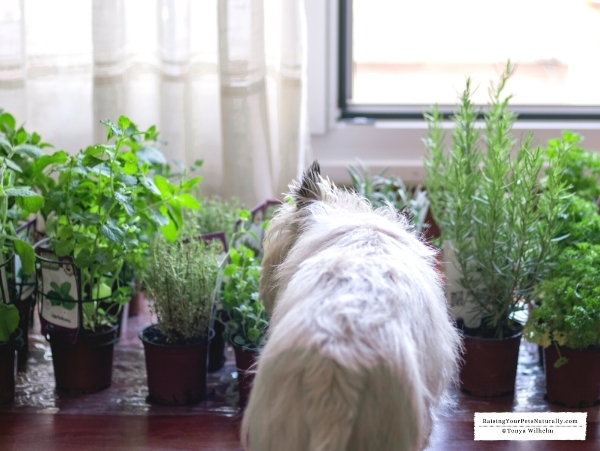
Homeopathy– Homeopathy is used to aid in healing the body or the mind and to bring a dog’s energy vibration back into balance. Homeopathy’s focus is on healing the mind and emotions. In homeopathy, you are looking to match the dog’s symptoms as closely as possible for the right remedy. Some common homeopathy remedies for canine anxiety include Aconitum, Argentum nitricum, Belladonna, Borax, Chamomilla, Ignatia, Lachesis, Natrum muriaticum, Nux vomica, Passiflora incarnata, Phosphorus, Rhododendron, or Staphysagria.
Music– Is one of my favorite pieces of any dog training process. Various research studies such as Dr. Deborah Wells’s The Influence of Auditory Stimulation on the Behaviour of Dogs Housed in a Rescue Shelter, have shown that classical music helps to soothe dogs. Dr. Susan Wagner took it further with another study, BioAcoustic Research and Development Canine Research, and determined the best sequences and notes to use for optimal results for a dog to relax, then created the Through A Dog’s Ear CD. I highly recommend playing a CD developed to relax a dog during various times in the day when you would like your dog to be relaxed and chilled.
Will He Always Be Shy?
Probably, unless you are reading this and your puppy is under 6 months of age. If your dog is an adult and has been fearful for quite some time, building confidence may be a life-long journey. But there is good news. If you practice actively boosting your dog’s confidence and working on your dog’s fearful triggers, he will be less afraid and he will be able to bounce back when he does get spooked. But, if you don’t actively work on your dog’s fears, he will very likely get worse over time and develop more fears and more extreme responses. Having lived this roller coaster of a ride myself, I can say it can be stressful living with a fearful dog, but when you see your fearful dog respond confidently in a situation that use to terrify him, you will be jumping for joy.
Your questions or comments are welcome below.
Are you looking for even more ways to stay up to date with Raising Your Pets Naturally? Sign up for the newsletter for more tips and promotions. Don’t forget to be social and Like, Follow and Subscribe. Comments below are always welcome.
Facebook Twitter Pinterest Instagram YouTube
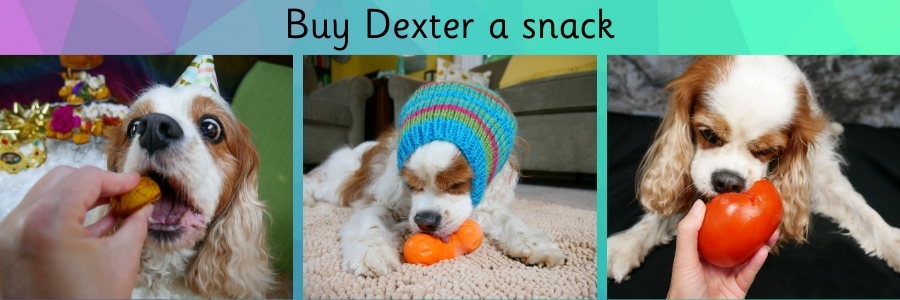
 |
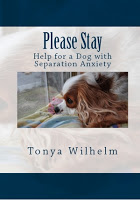 |









